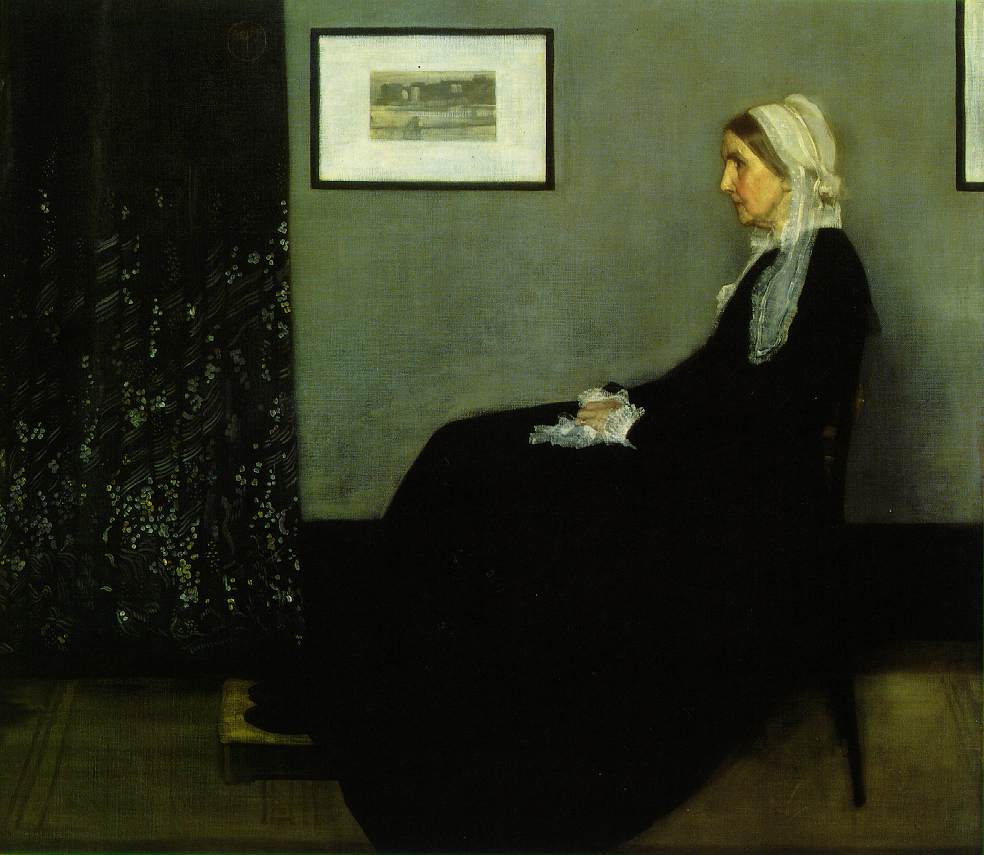For Mother’s Day I have chosen James McNeill Whistler’s famous portrait of his mother, which is in the Musee d’Orsay in Paris. The artist himself would probably have disliked the idea that it is an appropriate image for contemplation on this particular day of the year, since as far as he was concerned it was not really – certainly not primarily – “about” the woman who had brought him into this world. A stern devotee of the late nineteenth-century cult of art-for-art’s-sake, Whistler argued that the merits of a painting inhered not in its subject or story, but in the formal properties of its composition and execution. Hence the deliberately impersonal title which he affixed to the work when it was first shown, at the annual Royal Academy Exhibition of 1873: Arrangement in Grey and Black.
He explained his position more fully a few years later, in a short essay inflammatorily entitled “A Red Rag”: “Art should be independent of all clap-trap – should stand alone, and appeal to the artistic sense of eye or ear, without confounding this with emotions entirely foreign to it, as devotion, pity, patriotism and the like. All these have no kind of concern with it; and this is why I insist on calling my works ‘arrangements’ and ‘harmonies’. Take the picture of my mother, exhibited at the Royal Academy as ‘An Arrangement in Grey and Black’. Now that is what it is. To me it is interesting as a picture of my mother; but what can or ought the public care about the identity of the portrait?”
Whistler may have come to regard the picture as a kind of manifesto for his attitudes to art in general, but he painted it on the spur of the moment. In August 1871, the illness of one...

ITP 154Arrangement in Grey and Black:Portrait of the Painter’s Mother by James McNeill Whistler
30-03-2003

